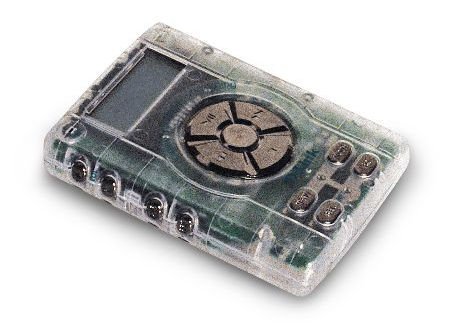D Link DMP-100 Portable MP3 Player
Review
MP3 - the new standard for
music distribution, or a technology doomed at the hands of the RIAA? While
nobody knows for certain, one thing is clear: this technology has changed how
many of us listen to music both at, and away from, our computers.
 With the ability to compress audio files up to
one-tenth their size, while maintaining very good quality, MP3's have definitely
raised some questions such as the one mentioned above. Realizing the true
potential of this emerging standard, several manufacturers have released
portable players, which generally store between 30 and 60 minutes of music on
tiny, often removable flash memory cards.
With the ability to compress audio files up to
one-tenth their size, while maintaining very good quality, MP3's have definitely
raised some questions such as the one mentioned above. Realizing the true
potential of this emerging standard, several manufacturers have released
portable players, which generally store between 30 and 60 minutes of music on
tiny, often removable flash memory cards.
Some of
these companies are well known for their audio related products, such as Sony or
Creative Labs, while others are relatively new to the market. One such newcomer
is D-Link. Highly regarded as one of the largest and most popular providers for
networking solutions, this company has lately been branching out into various
other markets including consumer video conferencing (via their DSB-C300 webcam),
and the product being reviewed here, the DMP-100 MP3
Player/Recorder.
Features & Specifications
· Compact &
Light
· 32MB Built-in Memory (expandable to 64MB with Smartmedia cards)
·
Voice Recording features
· 5-preset equalizer settings (Normal, Pop,
Classical, Jazz, and Extra Bass)
· Supports 24 - 256Kbps MP3 files
· 8-bit
/ 10MHz CPU
· 90dB Signal-to-Noise ratio
· Dimensions: 2 1/3 x 3 ¼ x 5/8
inches
Perhaps the most significant feature
of the DMP-300 is its voice recording function. With the ability to provide
up to 2 hours of recording in the basic 32MB configuration, this feature
is helpful for making memos to yourself, or other voice notes, which may
be important. Overall quality of this feature is sufficient, though not
outstanding.
Upon unpacking the MP3 player,
my first thought was that the player itself was missing. While I wasn't
expecting something the size of a Walkman, I sure wasn't expecting something so small.
Measuring barely larger than a deck of playing cards, the DMP-300 clearly meets the
definition of the word "portable."
Just like many products from D-Link, the player came in a
translucent case. As the success of Apple's iMac has shown, using translucent
casing seems to increase sales. While I cannot vouch for the selling potential
of the case alone, several friends who saw the player thought it was a neat
idea, and wanted to take a closer look.
As the DMP-100 uses a parallel-port interface, there are
definitely a couple of issues relating to installation. First and foremost is
the fact that most people have a printer attached to the only parallel port on
their system. This means that in order to use the DMP-100, it may be required to
disconnect the printer quite a bit (depending how often you decide to download
songs into the player). In addition, you must ensure your parallel port is
operating in ECP mode. This is configured in your system's BIOS; typically under
the Integrated Peripherals tab. Experienced computer users will be familiar with
this setting, but some newer users may not.

